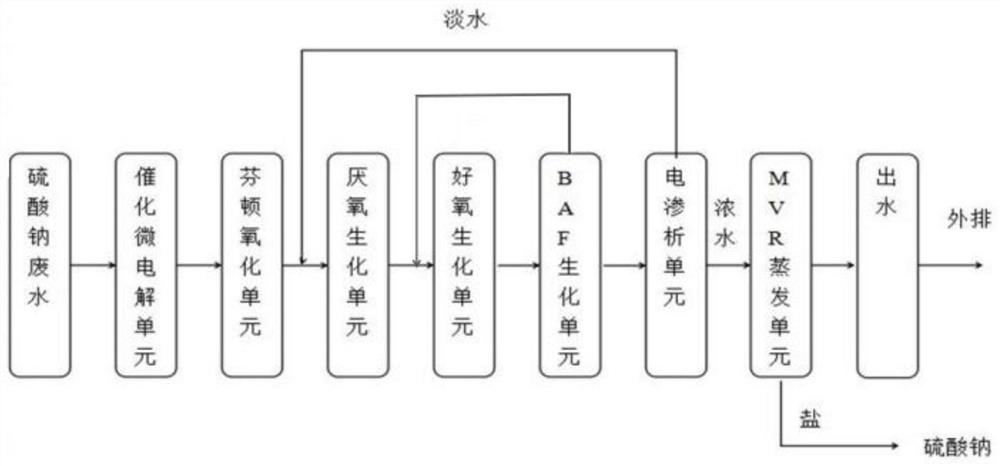Sodium sulfate wastewater treatment device and recycling method
A treatment device and sodium sulfate technology are applied in the field of sodium sulfate wastewater treatment and recovery of sodium sulfate in wastewater, which can solve the problems of water and soil pollution, high operating costs, and difficult biodegradation, so as to improve biodegradability and solve pollution problems. Problem, the effect of strong impact resistance
- Summary
- Abstract
- Description
- Claims
- Application Information
AI Technical Summary
Problems solved by technology
Method used
Image
Examples
Embodiment Construction
[0032] In order to make the object, technical solution and effect of the present invention clearer and clearer, the following examples are given to further describe the present invention in detail. It should be pointed out that the specific implementations described here are only used to explain the present invention, not to limit the present invention.
[0033] Such as figure 1 As shown, the device of the present invention includes a pretreatment system 1, an anaerobic biochemical treatment unit 2, an aerobic biochemical treatment unit 3, a BAF denitrification treatment unit 4, an electrodialysis concentration unit 5, an MVR evaporation unit 6, and the anaerobic biochemical treatment unit 6. The aerobic biochemical treatment unit 2 includes an anaerobic biochemical treatment unit inlet 8 and an anaerobic biochemical treatment unit outlet 9; the aerobic biochemical treatment unit 3 includes an aerobic biochemical treatment unit inlet 10, an aerobic biochemical treatment unit o...
PUM
 Login to View More
Login to View More Abstract
Description
Claims
Application Information
 Login to View More
Login to View More - R&D
- Intellectual Property
- Life Sciences
- Materials
- Tech Scout
- Unparalleled Data Quality
- Higher Quality Content
- 60% Fewer Hallucinations
Browse by: Latest US Patents, China's latest patents, Technical Efficacy Thesaurus, Application Domain, Technology Topic, Popular Technical Reports.
© 2025 PatSnap. All rights reserved.Legal|Privacy policy|Modern Slavery Act Transparency Statement|Sitemap|About US| Contact US: help@patsnap.com


